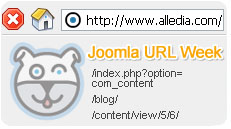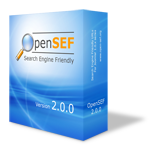Lately, there has been a lot of buzz about something confusingly called Web 2.0. It made its debut on the front of Time and Newsweek in March, but it still seems somewhat obscure to people I talk with. Does it come in a box? What was wrong with the old web? What’s different about this new version? Bear with me for two minutes, while I try to explain.
When I was a kid I loved to read a lot of books. Looking back I have to be honest and admit that most of them were pretty forgettable, plodding novels – I wasn’t reading "War and Peace" at the time. However, the kind I liked most were a genre called "Choose-Your-Own". At the bottom of every page, you would have a choice:
- If you want to jump over the cliff, go to page 64.
- If you will stay and fight the tiger, to go page 37.
- If you will swim across the shark-infested river, go to page 88.
Eventually I even started to try and write books. The less said about that the better, but you get the picture. Those old forgettable, plodding novels I read are Web 1.0. The books where I got to take control are Web 2.0. This is not a revolutionary concept at all. Having a family, playing a sport, going to a bar and meeting people Рall of these are Web 2.0, or in other words, interactive. Watching T.V., reading a book, sitting in a traffic jam – all of these are Web 1.0. The new websites that are exploding in popularity are those that allow people to interact with the web in new and useful ways. Let me give just a few examples:
Zillow.com
Ever have those flyers from Real Estate agents that say: “In the last year, 1 house was sold in your neighborhood for $150,000. The housing market is booming!”? Go to Zillow.com and you can view whole towns and cities. Every time you move your mouse over a house, its tax-assessed value appears. Most of the homes currently listed are in big cities, but the potential is easy to see.
30Boxes.com and Tadalist.com
Most business people have a calendar on the computer or PDA, but how can you share that with other people like your colleagues or family who need to know what you are doing? The answer is simple, sign up for a free group calendar at 30boxes.com or Tadalist.com, which allows you to keep group to-do lists. Both are completely free.
MySpace.com and Facebook.com
The leading tracker of big websites (Alexa.com) commented that if you go to MySpace, "you will probably walk away with the impression that it is a joke – some kind of junkyard of personal pictures, blogs and random stuff clumsily plopped on the web."
Don’t be fooled by that. In the course of two years, MySpace has gone from nothing to being among the top five websites in the world. What it does is allow people to share whatever they can put on-line. MySpace is dominated by teenagers, while Facebook is its college equivalent. Both are worth around $2 billion.
Now some people might say that Web 2.0 means that all the good domain names are gone and we are going to be stuck visiting sites like Xanga.com, RubyonRails.com. and Orkut.com. Indeed, I’d love to have a dollar for every stupidly named site that came across my screen. Others will conclude that this interaction is the future of the web and why so many people are turning off their T.V.s and spending more time online.
What does this mean for you and your website? There are some simple rules you can take from these sites:
- Most websites are too complex. They have too many features, too many buttons and too much to look at. Figure out what your website’s purpose is and make it as easy as possible for visitors to understand that. Web 2.0 is as much about ease of use as it is about technologically-advanced interactivity.
- You can piggy-back on the success of Web 2.0 sites. If you run a real estate website, why not include a little explanation about Zillow.com and then link there? Your visitors will thank you.
- Finally, why not start using Web 2.0 yourself? There are some excellent business tools out there, such as Basecamphq.com (Project Management), Campfirenow.com and Skype.com (chat) and Backpackit.com (organizational tools).

 In Parts 1 and 2 of our survey, we talked about
In Parts 1 and 2 of our survey, we talked about  SEF Advance is the granddaddy of SEF URL extensions for Joomla, having been around for nearly three and a half years now. It is also the only one of three that is sold instead of being released for free under the GNU/GPL license.
SEF Advance is the granddaddy of SEF URL extensions for Joomla, having been around for nearly three and a half years now. It is also the only one of three that is sold instead of being released for free under the GNU/GPL license. Although we are reviewing OpenSEF because of its ability to create Search Engine Friendly URLs for Joomla, this extension has many more features.
Although we are reviewing OpenSEF because of its ability to create Search Engine Friendly URLs for Joomla, this extension has many more features.